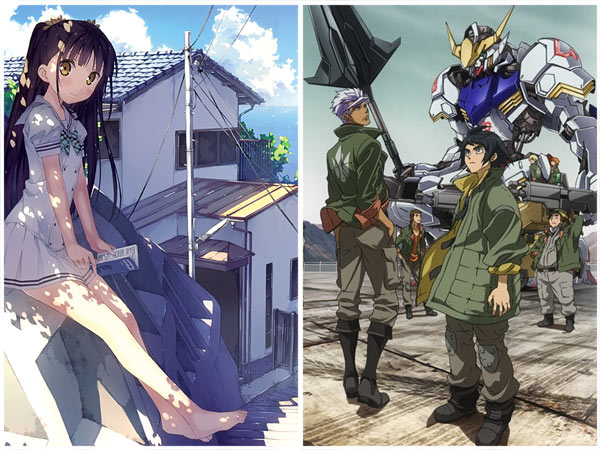Some great news about the all-new J-List website: our English-translated visual novels and eroge are finally restored and ready for full purchasing, including physical form and instant download!
There’s a new Mobile Suit Gundam series in town, and since I’m a big fan of the genre (I essentially learned Japanese so I could understand Zeta Gundam, back in the stone age before any anime was subtitled), I thought I’d give Iron Blooded Orphans a whirl. It’s a very well-executed mecha show that has lots to offer fans, with a good story that’s quite dark and gritty. One thing I like about the show is how it actively breaks the (sometimes tired) old tropes of the past and strikes out in some new directions, making it perfect for new fans who aren’t familiar with the past decades of Universal Century lore. The mecha and weapons are tweaked for the new story set on Mars, and there are other changes, for example piloting mecha now involves nanotechnology-enabled connections direct to the spine, Matrix style. Ever since Gundam Wing, “BL” has been an important part of the Gundam universe, the better to get the fangirls watching, and in Orphans this goes a step further by having the bishie pilots fight while shirtless. The main problem with this new Gundam series is that it’s making me want to re-watch other classic Sunrise shows, like Gundam 0083 or the outstanding Planetes. If you’re a Gundam fan, we’ve got some new shirts you should see…
I decided to write about housing in Japan, and asked J-List’s Facebook page readers if they had any questions. Here are some of the answers.
What kind of houses are there in Japan?
Naturally there are many kinds, from single-family dwellings to upscale condominiums (always called “mansions”) to apartments so small you’d be extremely uncomfortable in them. You can even order a “Canada import home” with all materials packed up and shipped over from Canada. Most houses in Japan contain both Western and Japanese elements, like traditional tatami rooms with an adjoining Western-style living room next door.
How much do houses cost?
Obviously it depends on the location, as everywhere. Land prices in Japan crashed hard when the asset bubble burst in 1990, and are still around half of their former peak. High-demand places like Tokyo and Kyoto are quite expensive. In decades past, you never talked about the value of a house because it was a given that you were just buying the land, and would tear down any existing structure and build a new one, since who would want to live in a “used” house? This is slowly changing though, and buying an existing house then remodeling it is becoming more normal.
One unique problem Japan has is “empty house syndrome,” with an estimated 20% of houses not being lived in due to the shrinking population, parents’ deaths and so on. There’s simply nothing to do with these houses.
What does rent cost, on average?
For a nice 2LDK (which means a 2 bedroom apartment with a combination living-dining-kitchen) in Gunma you’d probably spend 50,000 yen, or around US$400, which looks cheaper than it really is because of the weak yen. Add 25-40% to this amount if living in Tokyo. One big challenge when getting an apartment is the fact that you need to pay first month’s rent, 2 months for deposit and a month of “thanks money” paid to your landlord, which is a lot of cash. Japan is the land of no inflation, and these numbers haven’t really changed in the 24 years I’ve lived here.
How big are most homes? Do they have basements?
Outside of large cities, houses are normal size. Often there are space-saving features, like businesses and homes built together, like the liquor store my parents run. There are never basements in Japan due to earthquakes, the same as in California.
What are some basic household rules that exist?
Always take shoes off at the front door. You wear slippers when walking around inside, though finding gaijin-sizes slippers isn’t always easy. Japanese homes rarely have central heating, so you’re usually using a small kerosene heater to warm a room. This, combined with the tradition of building homes out of paper (the shoji paper doors, at least) means fires are always a risk.
J-List is revving up our anime T-shirts, creating some great new designs like that “I am Aho” YuruYuri design. Today we’ve got two more shirts for you, homages to the classic Mobile Suit Gundam series. Browse them all right now!

















